|
BULB LOG 17 --- 25th April 2007
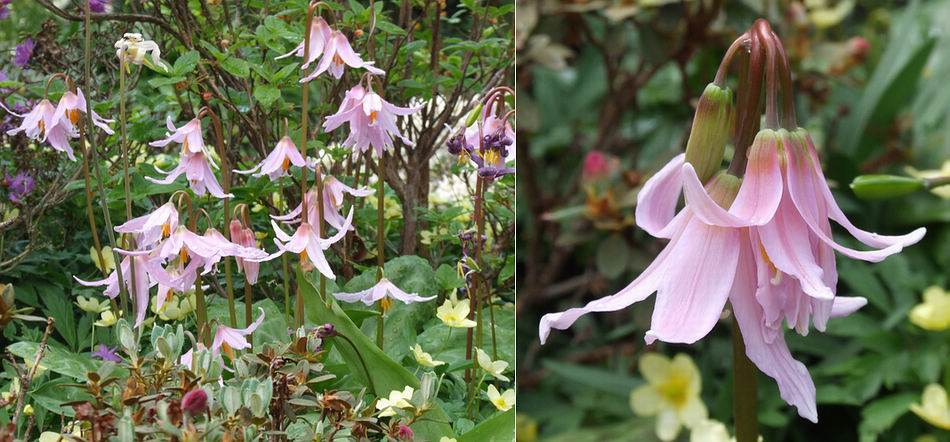
Erythronium revolutum multi heads
To back up the comment I made in last week's log about multi headed Erythronium revolutum, I am finding them every where I look - two three and even four flowers per stem. Unlike many of the hybrids which have multiple flowers spaced evenly up the stem, the additional flowers on the revolutums are all clustered at the top of the stem. I cannot think what the reason for this could be but whatever the cause it must have happened last year around this time when the buds were forming, perhaps warm conditions. Can any of you that are in warmer areas tell me if you get multiple flowers on your Erythronium revolutum on a regular basis?
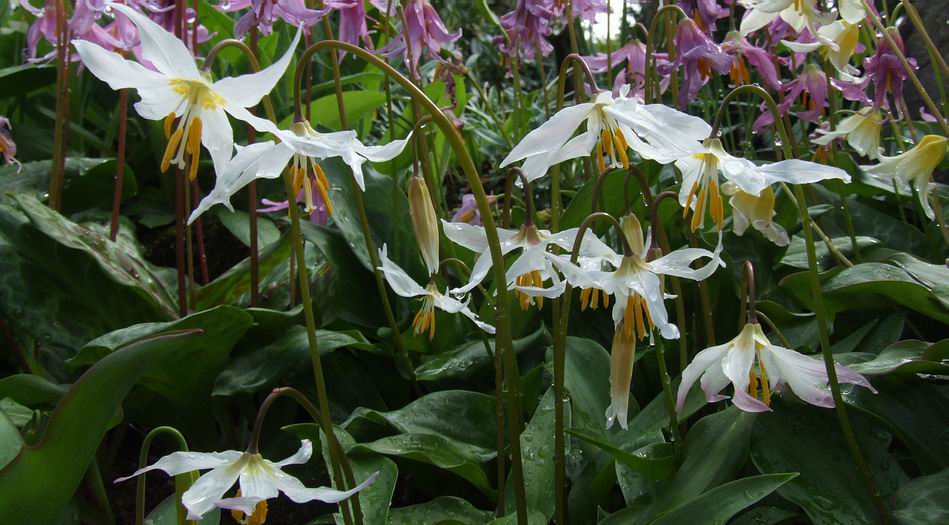
Erythronium elegans
Always later into flower, Erythronium elegans is just opening now. It is well named as the flowers and the poise of the plant makes it truly elegant. It increases reasonably well but raising it from seed is still the best and most reliable form of increase. The flowers usually take on a pink flush after being out for a week or so and this is probably due to some E. revolutum, being in its ancestral tree. It is thought that this is an ancient fertile and stable hybrid between E. montanum, which is just coming through the ground now, and E. revolutum, so making it a good species.
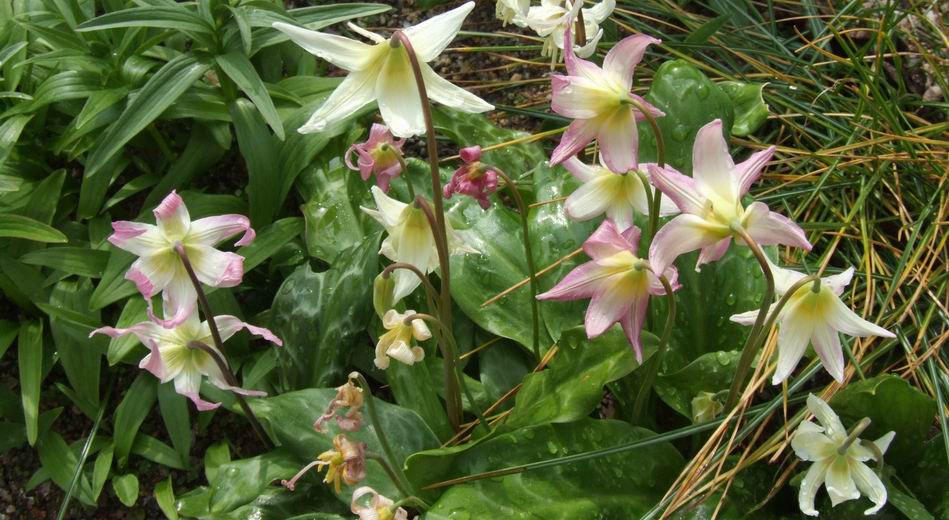
Erythronium hybrids
This group of seedlings just looked like E. californicum or 'White Beauty' but a few days after the flowers opened some of them started to take on a strong pink colour towards the ends of the tepals indicating that some hybridisation has occurred. I have marked up the coloured ones and will try and separate them when the leaves start to yellow.
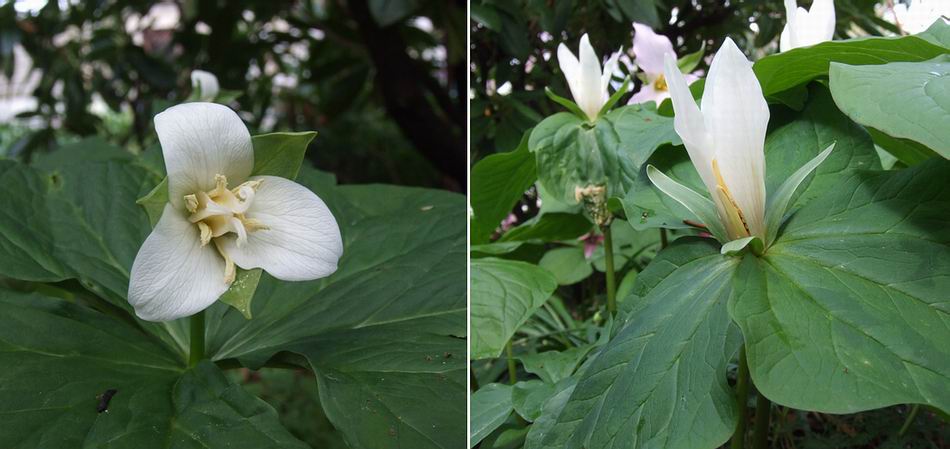
Trillium flexipes and chloropetalum album
Just so you know that it is not just erythroniums in flower just now I better show you some other bulbs that are at their best at the moment.. Trilliums are all over our garden as they, too, are irresistible and luckily they too enjoy our cool moist humus- rich garden conditions. Trillium flexipes and T. chloropetalum album are both happy to grow close to and underneath rhododendrons even though the ground there can get very dry in the summer. It is often written that you should grow trilliums in the shade and this may be good advice in some cases but, as Scotland is in the shade most of the time, it is not essential for us to keep our trilliums out of direct sunshine. One thing they do need shelter from is the wind which can shred the leaves if it gets up to any force at all. We often get heavy hail storms in May and the hail stones just go straight through the leaves, leaving them full of holes.
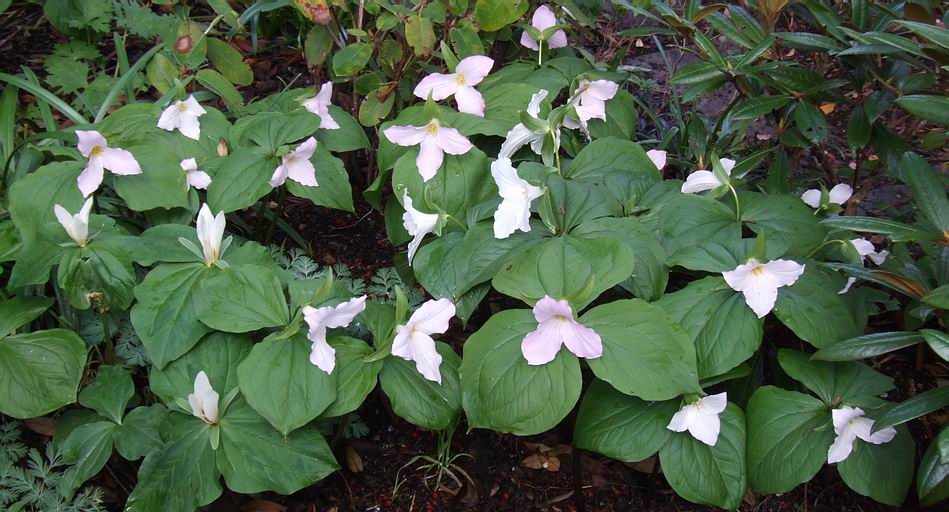
Trillium grandiflorum seedling
Trillium grandiflorum does especially well for us and seems to grow on well wherever we plant it. This is one group of mature seedling plants raised form our own seed collected from a white grandiflorum which grows beside a plant of T. grandiflorum roseum. I have shown it before but it is always nice to see a good plant again.
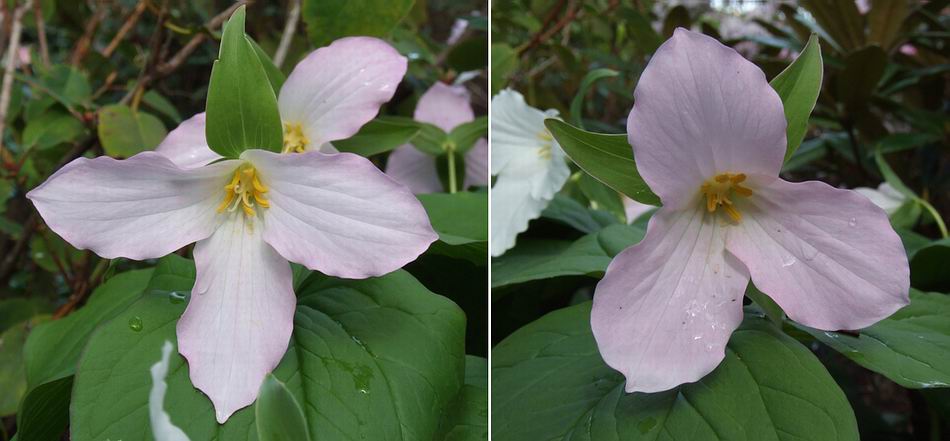
Trillium grandiflorum pink flowers
Here are two of the pink forms, we planted out about 150 plants a few years ago and at least ¾ of them have some degree of pink - it is not just the intensity of the pink that varies but the shape of the flowers. The flower on the left always has that flat top making it less attractive than the right hand one which exhibits a much more pleasing arrangement of the petals. It is my aim to raise a good seed strain so we can all have pink Trillium grandiflorum growing in our gardens without either breaking the bank or relying on vegetative increase from an old clone that will only get weaker as the years go on.
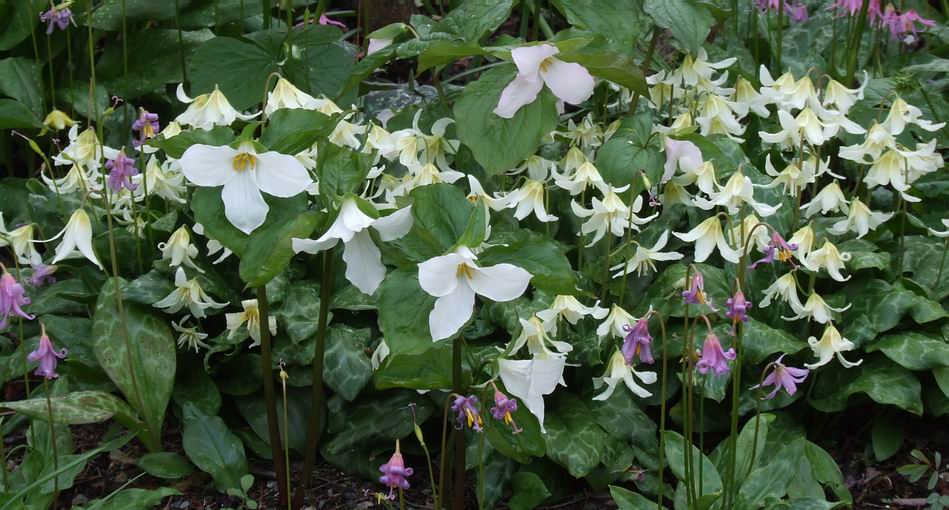
Bulb bed
The trilliums really mix in well with my erythroniums and we have lots of plantings looking like this just now.
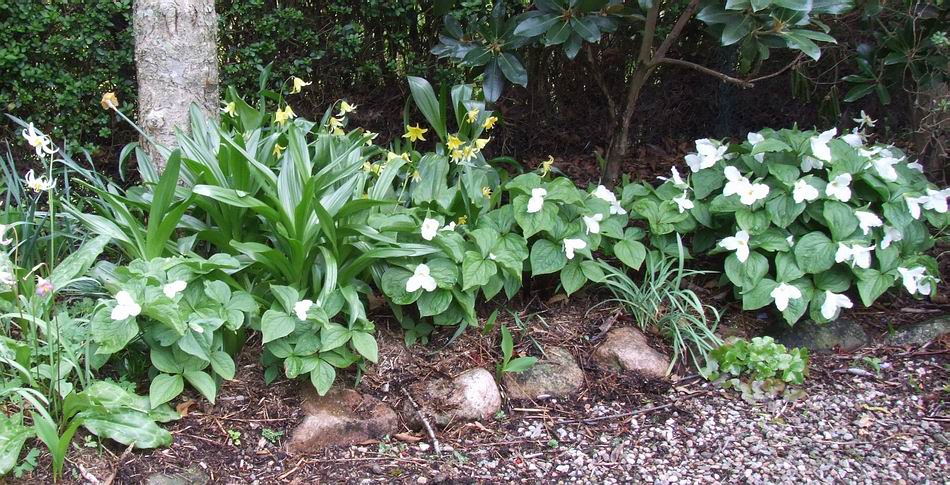
Trillium grandiflorum split clump
You may remember that I split up one large clump of Trillium grandiflorum last year as the flowers were fading - see bulb log 23, 2006. The reason I split them when they are still green is so I do not damage the summer growing roots that the plant relies on for the following season. I will split the large clump on the right in a few weeks time and you can see the five smaller clumps flowering happily - those were the result of the clump I split in 2006. It is often said the trilliums sulk the year after they are split and that is the case if you split them after the new roots have formed but, as you can see, if you do it just after the flowers fade they will not receive a check at all.
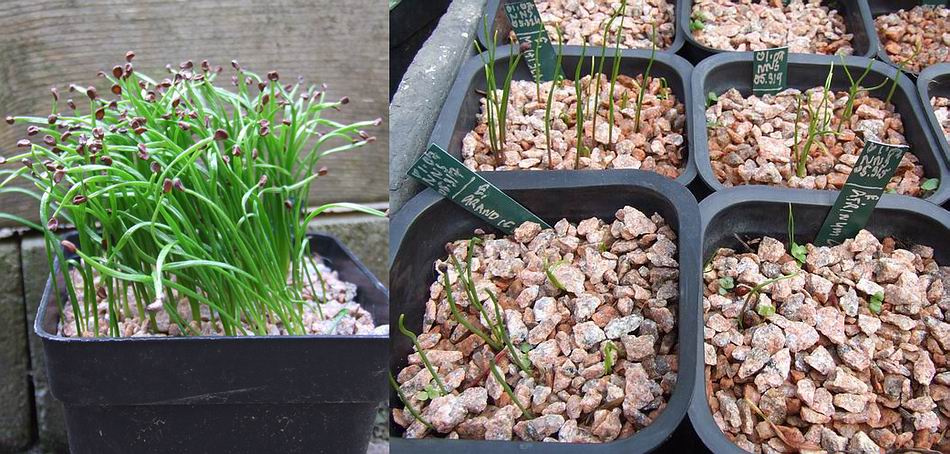
Erythronium seedlings germinating
While I am showing you the results of subjects from previous logs here are the Erythronium seeds that I sowed in January this year - see log 03/2007. It was later than I like to sow seed but these only arrived from Ron Ratko in January so I soaked them overnight and sowed them. The pot on the left is a pot of my own seedlings for comparison; these were sown last September having also been soaked overnight. If I had not soaked the Ron Ratko seed before I sowed it I would probably not have seen any germinate before next spring. I still expect a sporadic germination with more appearing next year from the January sown seed, while my own seed which was sown inside the time window, has given 100% germination in the first year.
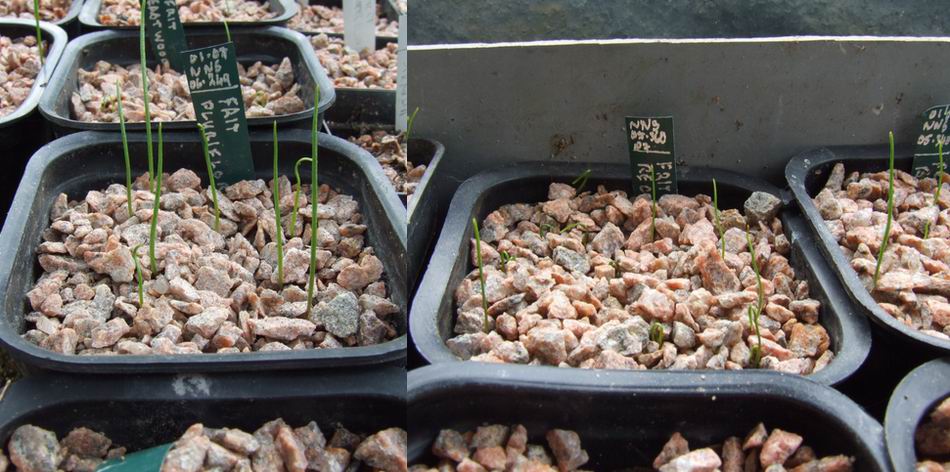
Fritillaria seedlings germinating
Another experiment was sowing the North American Fritillaria seeds (that I also got from Ron) in January. I do not normally sow my frit seed after November, choosing instead to store it until the time window comes around next year, ideally in September/ October. However I have heard that some people got good results from sowing the American frits in January and as I already know that the American frits have a completely different growth cycle from the old world species, I gave it a try. Here are the results and you can see that most of the species I sowed have now produced some seedlings so it is beneficial to sow the North American frits even as late as January or February.
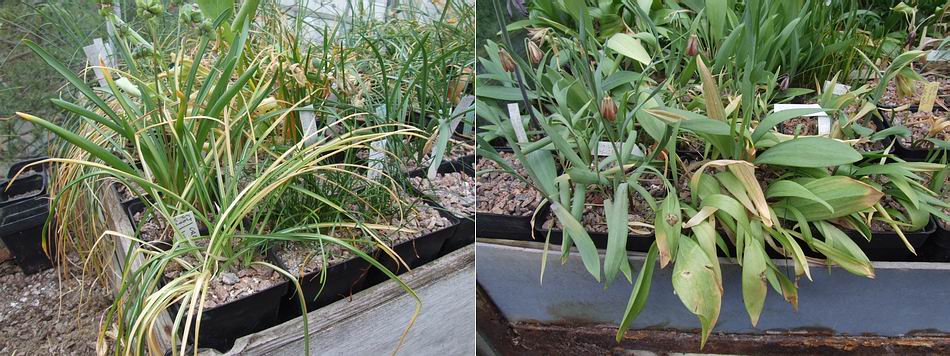
Bulb leaves yellowing
With the very unseasonal hot weather we have had recently many of the bulbs are already going back - some bulbs, which in previous years I have had to withhold water from in June to force them into dormancy, are now showing yellowing of the leaves. If your bulbs are showing these early signs of retreating into dormancy because of the heat, and perhaps they have also dried out a bit much, do not be tempted to water them in the hope they will grow on for a bit longer. This can have detrimental effects as the roots will most likely have ceased to function and excess water can cause basal and bulb rot.
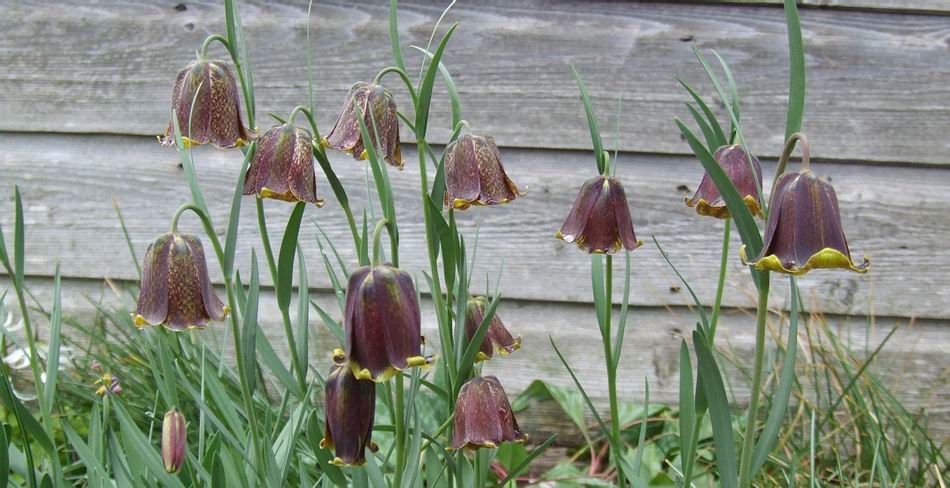
Fritillaria pyrenaica seedlings
I am very aware that I have been concentrating the bulb log on erythroniums and neglecting all the frits that have been in flower over the last few weeks, I may come back to them, but here are a few from today. A group of Fritillaria pyrenaica seedlings show some of the species variation. I like a pot of a single clone but I enjoy a mixed clump much more and I get a better seed set from these mixed clones. I have found that Fritillaria pyrenaica does not like to grow in a pot in the bulb house it much prefers to be outside in the garden and when we were exhibiting it we alternated the bulbs so they spent a couple of years in the garden before we lifted some to grow in a pot for the shows.
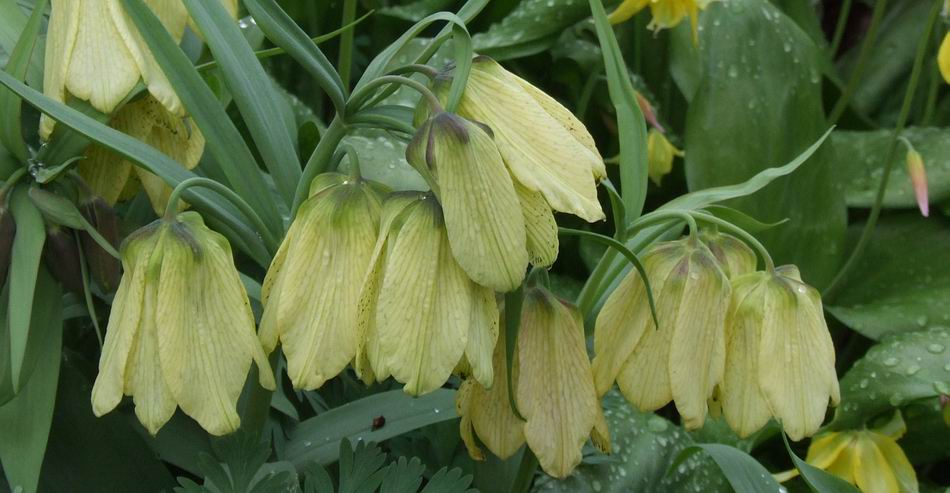
Fritillaria pallidiflora
Another frit that is much better off in the garden is Fritillaria pallidiflora. It seems to be quite happy growing in a pot but the size of the plant makes it much more suited to a bulb bed where it looks spectacular.
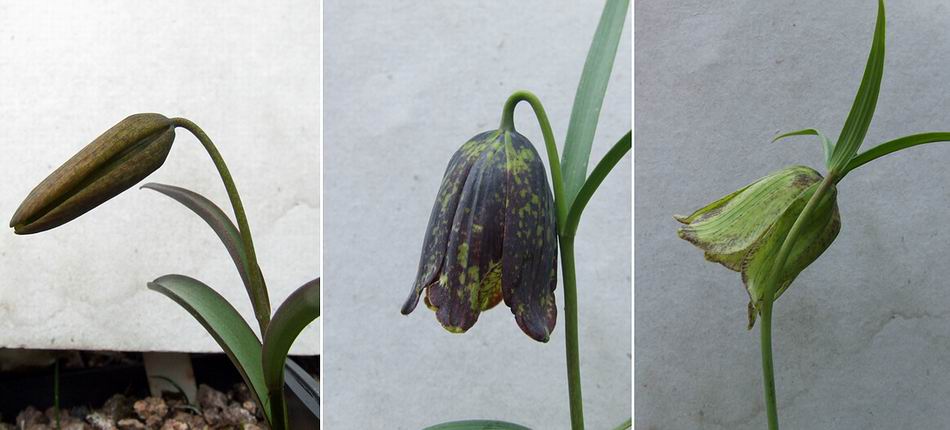
Fritillaria delavayi, cirrhosa and thunbergii
A trio of later flowering Chinese fritillarias from the left F. delavayi, cirrhosa and thunbergii - all are growing in plastic pots in an open sand plunge bed.

Not all Bulbs
Just in case you think that our garden is nothing but bulbs here is a picture showing some of our other loves - rhododendrons,
^ back to the top ^
|

